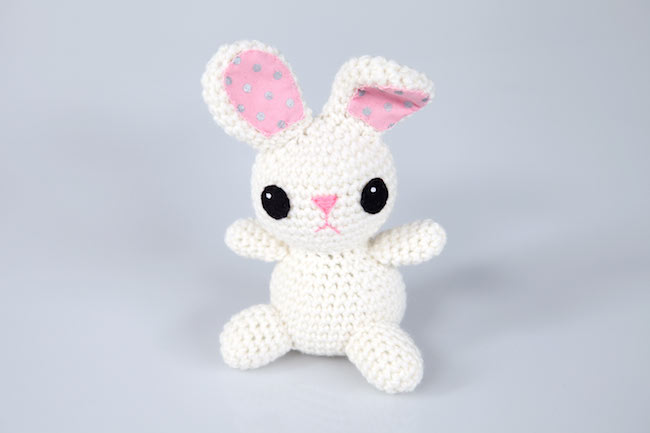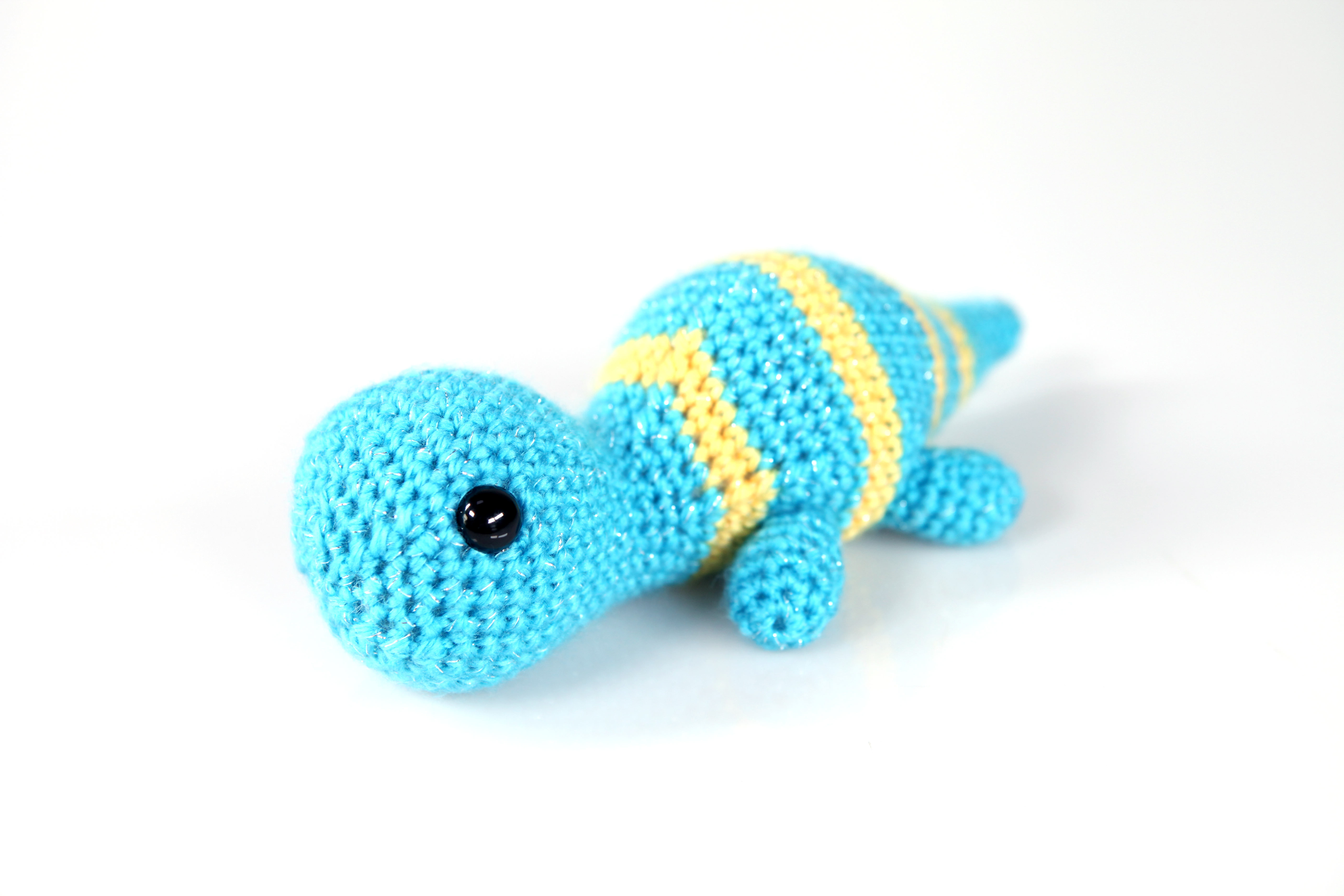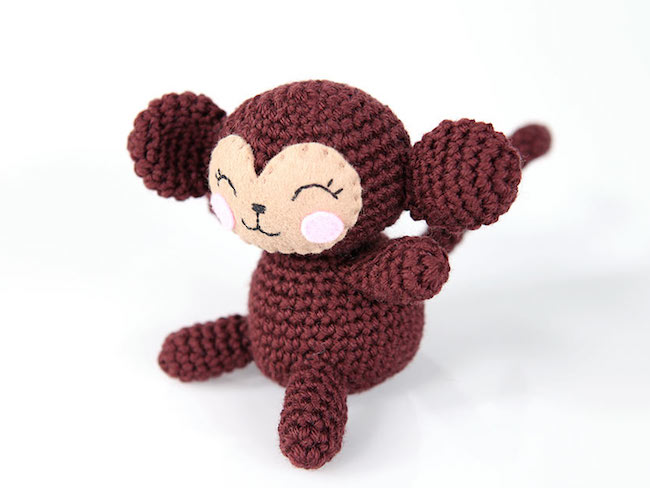“Amigurwhaaaat?!” they asked me, and boy do I have a lot to say. Let me introduce you to the fun, colorful, and sometimes kitschy universe of amigurumi!

What in the world is amigurumi?
Amigurumi is a term that covers the beautiful and fun trend of crocheting and knitting stuffed animals, people or even inanimate objects. You are only limited by your own imagination!
The phrase itself really encompasses the entire knit and crocheted stuffed toy genre. The first part of the word means knit OR crochet (yes, both!) and the second part means stuffed doll/toy. Essentially, it means “knit/crocheted stuffed toy friend!” How awesome is that? Amigurumi: the art of literally MAKING friends. Read more about the phrase on Fresh Stitches.
Personal history
In the early 2000s, amigurumi made a splash on the Internet. Adorable little bears with huge heads, sleepy kitty cats with long arms, and other brightly colored, almost cartoonish creatures and patterns emerged. It was during this time that I learned to crochet. My mom taught me how to make a granny square and when I turned to the Internet for instructions on different stitches, I became enamored with amis of all sorts!
I started with the basics, practicing by making a stuffed ball. My kid LOVED it. Eventually, I taught myself to read the crochet charts in Japanese craft books and on Web sites. My first and favorite was the amineko (“neko” means cat! Cat friend — I bet you can’t stand the cute)! I made the same pattern over and over, as gifts for family and friends. It was great practice and easily personalized with different colored yarn.
Getting started
Most amigurumi are crocheted, but you CAN knit them. The reason it is more of a crochet trend is simply because of the fabric each craft makes. Knitting creates a stretchy fabric, where as crochet results in a dense, thick fabric.
Either way, you start with a small ring of stitches (an adjustable or magic circle for crocheters). From there, a series of increases and decreases creates the shapes of your new friend. They certainly look complicated, but most projects require you to know only one stitch and how to increase and decrease that stitch. Your friend will likely be small, so the project can be made with little monetary investment.
There are only a few materials you need for amigurumi.
- Yarn, of course, is one of them. Depending on the size of your pattern, you may only need a small amount. Perhaps you can use some scraps left over from another project?
- You will also need a hook or double-pointed needles (DPNs) smaller than what you usually use for that specific yarn. For instance, if you are working with worsted weight yarn, a 4 or 4.5 mm (US F or G) hook or DPNs would suffice. You want to work your stitches fairly tight so the stuffing does not peek through when you are putting your friend together.
- You also need a yarn needle for sewing limbs together.
- And lastly some sort of filling to stuff your project.
- Other embellishments are optional, such as plastic safety eyes or noses; you can embroider these details instead!

Tips for making amigurumi
#1: Learn how to work small diameters in the round.
If you crochet, this means you need to learn how to work the magic/adjustable ring.
If you knit, your start will really depend on the pattern you are working. I think most call for you to cast on a small number, like 6 or 8, to join in the round. You can use the beginning tail to stitch the hole up. If you would really like to get complicated, you could use an invisible cast-on, like a provisional cast-on or the figure-8 cast-on. Like I said, your pattern will almost always specify which cast-on to use. I suggest following the written directions until you feel more comfortable deviating from them and developing your own.
#2: Learn how to work increases and decreases.
In crochet, you are working the single crochet (SC), so to increase you just make two SC in the SC of the previous round. Some patterns may specify a more drastic increase, in which case you will make more SC into the stitch.
When decreasing, you will encounter the abbreviation scXtog where “X” is either 2 or 3, depending on what sort of shape you are working. If you are decreasing one stitch, you will see “sc2tog” and be turning TWO SC into ONE. If you are decreasing two stitches, you will see “sc3tog” and be turning THREE SC into ONE. Just remember that “scXtog” is ONE stitch, so whatever “X” is, you will be decreasing that number of stitches down to ONE.
In knitting, you almost immediately start working increases to create the shape. Imagine you are working a hat from the top down! Most patterns will specify which increase to use, so work whatever is asked.
When decreasing, you will probably use the k2tog or the ssk. Of course, follow the pattern for accurate shaping. If you are developing your own pattern, keep in mind that increases and decreases can lean left or right, so keep things consistent and/or symmetrical for the best look!

#3: Learn how to sew things together and stuff your new friend evenly.
For both knit and crochet, you will likely end up with a bunch of body parts to sew together. You should become familiar with the whip stitch, which is basically just bringing the yarn through a stitch and through where you want to attach it. It is really easy, but it can be frustrating to get things placed evenly. Practice, practice, practice! We have all had to go through it.
Stuff as evenly as possible. Use small pieces of filling at a time. I tend to err on the side of over-stuffing rather than under-stuffing. Remember that hugging and holding your friend will result in impacted stuffing, so you might want to put some extra in it.
#4: Learn how to read crochet/knit charts and graphs.
This tip is primarily for the crocheters, but knitters can also probably find it useful. Become accustomed to stitch SYMBOLS. Often times you will find completely darling patterns and they are in a foreign language! Do NOT fret! Did you know there are yarn standards? Not everyone will follow them, but most will, and the symbols you see will be pervasive through many patterns. Check out the Craft Yarn Council for more information, including a handy list of crochet AND knit symbols used in charts and graphs.
I am re-entering the crafting world, as so many people have, in this Covid-world. Your posts on Pinterest have been much enjoyed.